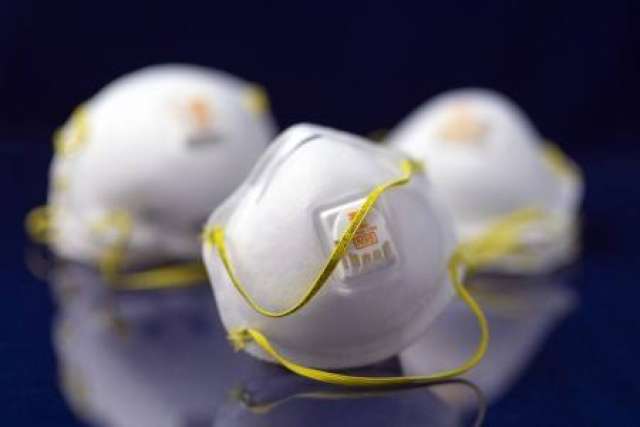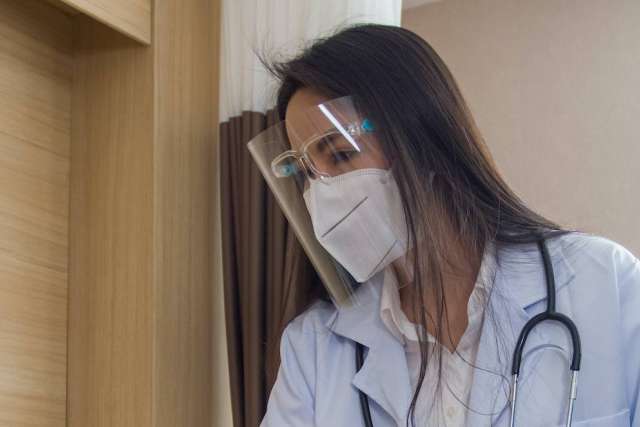Because omicron is so much more contagious than previous COVID-19 variants, health officials say we need more protective masks: surgical masks or KN95 and N95 respirators rather than the cloth face coverings worn earlier in the pandemic.
But does the type of mask you choose really make that much of a difference?
Yes, experts say, because of filtration. Surgical masks, and KN95 and N95 respirators, are made with several layers of filtering material, which makes them more effective at capturing infectious particles before they can be inhaled.
“They have more layers of protection built into them,” Los Angeles County Public Health Director Barbara Ferrer, PhD, MPH.
Fit is also important, experts say. N95 and KN95 masks sit snug on the face, without gaps that might let in viral particles. Surgical masks are less snug, but have a nose wire that aids fit and can be worn under a cloth mask to reduce gaps.
With the rise of the omicron variant, mask guidance has changed. While cloth masks were considered adequate earlier in the pandemic, surgical-level masks are now recommended for everyone. The U.S. Centers for Disease Control and Prevention updated its mask guidelines on Jan. 14 to clarify that cloth masks are not as protective as well-fitting surgical masks and respirators.
To make sense of the changes, Kristin Schwab, MD, a pulmonologist and critical care specialist at UCLA Health, explains different mask types and how they protect against viral spread.
How do surgical masks, KN95s and N95s differ?
“They’re each developed according to certain standards to protect the wearer from inhalation of certain particles,” Dr. Schwab says.
Surgical masks, for example, are designed to protect against large particle droplets, she says. They minimize exposure to droplets expelled from coughs and sneezes. While they don’t protect against very fine, aerosolized particles, they work better than cloth masks because the nose wire allows for a tighter fit, Dr. Schwab says.

N95 and KN95 masks offer even more protection. “They have been tested and confirmed to trap 95% of the riskiest particles, and particularly those particles that are aerosolized,” Dr. Schwab says.
That’s important because COVID-19 can be transmitted through both droplets and aerosols. Aerosols are groups of very fine particles suspended in the air.
Aerosolization, Dr. Schwab says, is “the reason why, in hospital settings and health care facilities, we use airborne precautions when taking care of these patients.”
N95 masks have straps that wrap around the head, offering an especially close and secure fit. KN95 masks have ear loops, which may make them more comfortable to wear for extended periods.
KF94 masks are another option, Dr. Schwab adds. They’re subject to similar regulations as the 95 masks and filter 94% of aerosolized particles.
Counterfeit masks have appeared on the market, so research your purchase carefully, she advises. The CDC offers guidance on how to tell if the N95 respirator you’re considering is approved by the National Institute for Occupational Safety and Health.
How important is mask fit?
“Fit and filtration are complementary and equally vital,” Dr. Schwab says. “The mask needs to cover the mouth and the nose and fit snugly so there are no gaps on the side and even on the top and bottom.”
She notes that people who wear a beard might want to keep it close cropped so a mask can fit more snugly to the face.
What about cloth masks? Would doubling up help?
Not all cloth masks are created equal, Dr. Schwab says. Some have a nose wire for a more secure fit and several layers of fabric or a pocket inside for a changeable filter. Those fabric masks would be more protective than flimsier, looser-fitting options.
As far as double-masking, the best choice might be to top a paper surgical mask with a cloth mask for a secure fit and multiple filtering layers.
Are there risks to wearing masks for long periods of time or breathing in mask fibers?
“By and large, there really aren't any risks with prolonged mask wear,” Dr. Schwab says, adding that studies show that wearing a mask can actually decrease symptoms of chronic allergies.
Inhaling mask fibers isn’t dangerous, she says. People with skin conditions or allergies might want to check with their medical provider to discover their best options.
And don’t worry about carbon dioxide being trapped inside the mask.
“Studies that have shown that carbon dioxide molecules are so small that they can easily pass through the mask material,” Dr. Schwab says. “So masks don't affect the levels of carbon dioxide you’re breathing in any way.”
But do keep your mask clean and replace it when it becomes damp or dirty. Keep the inside of the mask folded against itself and wash your hands before putting it on and after taking it off.
“The outside of the mask should be considered kind of a dirty space,” she says. “Because of that, you should definitely keep the same side out whenever you’re reusing a mask.”
Why does mask guidance keep changing?
Blame the variants and evolving understanding of COVID-19.
Early on, health officials said masks weren’t needed beyond medical settings. Before long, though, masks were mandated in many places and touted as a key way to protect both the wearer and those around them from spreading COVID-19. But cloth masks were good enough, officials said. Save the heavy-duty respirators for health care workers.
That changed with omicron’s rapid spread.
“The contagiousness of the virus, or the virus strain really, impacts a lot of mask guidance,” Dr. Schwab says. “I think the current guidance that we're seeing is largely reflective of the fact that omicron is so contagious, and so we're really having to take these extra precautions to protect ourselves because of that.”
California has a statewide indoor mask mandate in place through Feb. 15.
Get the latest updates about the COVID-19 pandemic, vaccines, testing options and more.
Related articles
When does a pandemic become endemic – and what is the difference?




